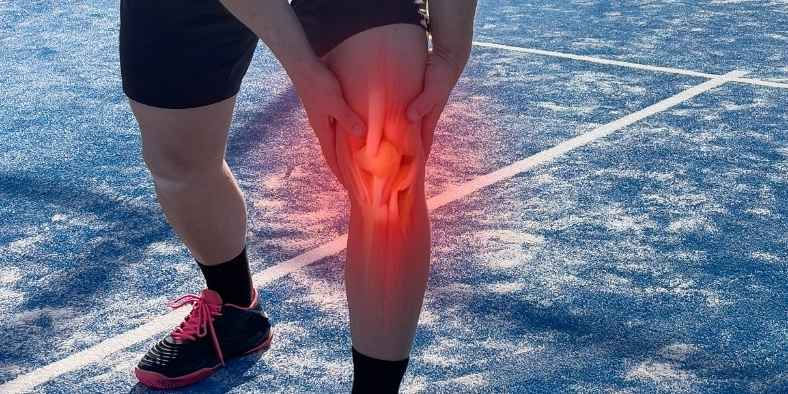Rowing vs. Running for Joint Health: A Low-Impact Cardio Showdown
- David

- Dec 31, 2024
- 6 min read
Updated: Feb 26

Table of Contents
Summary
Protecting your joints is crucial for maintaining mobility, preventing injuries, and staying active throughout your life. When it comes to cardio workouts, rowing and running are two popular options, but they differ significantly in their impact on joint health. Rowing is often praised for its low-impact nature, while running, though effective for fitness and endurance, is known for its repetitive stress on the knees, hips, and ankles.
In this article, we’ll dive into the joint impact of rowing versus running, explore their injury risks, and provide tips to keep your workouts joint-friendly. Whether you’re managing arthritis, recovering from an injury, or simply seeking a sustainable exercise option, this guide will help you choose the best workout for your joint health and overall fitness goals.
The Science of Joint Impact

Understanding how rowing and running affect your joints is essential for selecting the right workout to protect mobility and reduce injury risks. Let’s explore the mechanics of each exercise and their implications for joint health.
Rowing: The Low-Impact Advantage
Rowing is renowned for its low-impact nature, making it a joint-friendly workout for people of all ages and fitness levels. Here’s why:
Smooth Motion:
The rowing stroke involves fluid, controlled movements that minimize jarring impacts on the joints.
Seated Position:
By sitting during the workout, you reduce weight-bearing stress on the knees, hips, and ankles.
Even Load Distribution:
Rowing engages both the upper and lower body, spreading the workload evenly and reducing strain on specific joints.
This makes rowing an excellent option for individuals recovering from joint injuries, managing arthritis, or looking to avoid high-impact activities.
Running: A High-Impact Cardio Workout
Running, in contrast, is a high-impact activity that places significant stress on the joints, particularly during repetitive motions:
Weight-Bearing Strain:
Every stride subjects the knees, hips, and ankles to forces up to three times your body weight.
Repetitive Impact:
The constant pounding of running can lead to overuse injuries, particularly for those running on hard surfaces or with improper form.
Strength and Stability Benefits:
Despite its impact, running helps build bone density and strengthens the muscles supporting the joints, which can improve overall joint stability.
While running’s high-impact nature can be challenging for some, proper form, footwear, and surface choices can mitigate its effects.
Key Differences:
Rowing:
Offers a joint-friendly alternative for low-impact cardio.
Running:
Improves bone density but requires caution to avoid overuse injuries.
Injury Risks and Prevention

Both rowing and running have their injury risks, but understanding the causes and implementing prevention strategies can help you enjoy these workouts safely while protecting your joints.
Common Injuries in Rowing
While rowing is low-impact, improper technique or overuse can lead to injuries, including:
Lower Back Strain:
Poor form, especially overextension during the pull phase, can cause strain in the lumbar region.
Knee Discomfort:
Excessive knee bending or poor alignment during the drive phase can lead to discomfort or strain.
Shoulder Strain:
Overreaching at the start of the stroke may stress the shoulders.
Injury Prevention Tips for Rowing:
Focus on proper form: Engage your core, drive with your legs, and avoid overreaching.
Adjust resistance to avoid overexertion.
Incorporate mobility exercises and stretches to support joint flexibility.
Common Injuries in Running
Running’s high-impact nature can lead to overuse injuries, including:
Runner’s Knee:
Pain around the kneecap due to repetitive stress.
Shin Splints:
Pain along the shinbone, often caused by overtraining or running on hard surfaces.
Ankle Sprains and Stress Fractures:
Resulting from improper foot placement or excessive impact.
Injury Prevention Tips for Running:
Invest in high-quality running shoes with adequate support.
Run on softer surfaces, such as grass or trails, to reduce impact.
Gradually increase mileage and intensity to avoid overtraining.
Strengthen stabilizing muscles with exercises like lunges and calf raises.
Comparing Risks:
Rowing:
Lower overall risk of joint injuries but requires attention to form to avoid back and shoulder strain.
Running:
Higher risk of joint stress and overuse injuries, particularly for beginners or those running on hard surfaces.
Long-Term Mobility and Recovery

Maintaining joint health over the long term is essential for staying active and avoiding chronic pain or mobility issues. Both rowing and running impact long-term mobility and recovery differently, depending on how they are performed and integrated into a fitness routine.
Long-Term Mobility with Rowing
Rowing supports long-term joint health due to its low-impact nature and emphasis on full-body motion:
Improved Range of Motion:
The rowing stroke involves dynamic movements that keep the joints flexible and mobile, especially in the hips, knees, and shoulders.
Reduced Wear and Tear:
The smooth, controlled motion minimizes joint strain, preserving cartilage and reducing the risk of osteoarthritis.
Joint-Friendly for Aging Adults:
Rowing is particularly beneficial for older adults or individuals managing arthritis, as it provides a safe way to stay active without aggravating joint pain.
Long-Term Mobility with Running
Running can positively or negatively affect long-term mobility, depending on how it is approached:
Bone Density Benefits:
As a weight-bearing activity, running helps maintain bone strength, which is critical for preventing fractures and osteoporosis.
Risk of Chronic Joint Issues:
Over time, high-impact stress on the knees, hips, and ankles can lead to wear-and-tear injuries, especially for those with improper form or inadequate recovery.
Importance of Recovery:
Proper recovery strategies, such as stretching and cross-training, can mitigate the long-term effects of repetitive impact.
Recovery Strategies for Each Workout
Rowing:
Incorporate post-workout stretches for the back, shoulders, and hips to maintain flexibility and prevent stiffness.
Running:
Use dynamic stretches pre-run and static stretches post-run, particularly for the calves, hamstrings, and quads. Foam rolling can also aid muscle recovery.
Pro Tip: Alternating between rowing and running in your fitness routine can provide the benefits of both workouts while reducing the risks of overuse injuries.
Best Practices for Joint-Friendly Workouts

Both rowing and running can be made more joint-friendly with the right approach. Adopting proper techniques and recovery strategies ensures you maximize the benefits of these workouts while minimizing stress on your joints.
Making Rowing Joint-Friendly
Rowing is naturally low-impact, but incorporating these tips can further protect your joints:
Focus on Form:
Keep your back straight, engage your core, and avoid overextending your knees or lower back. Proper form reduces unnecessary strain on the joints.
Adjust Resistance:
Start with lower resistance to prevent overloading your joints and gradually increase intensity as your strength improves.
Warm-Up and Cool Down:
A gentle warm-up prepares your muscles and joints for the rowing motion, while a cool-down helps with recovery.
Cross-Train with Mobility Exercises:
Include yoga or stretching routines to keep your joints flexible and reduce stiffness.
Making Running Joint-Friendly
Running’s high-impact nature can be managed with these joint-protection strategies:
Wear Supportive Shoes:
Invest in high-quality running shoes that match your gait and provide adequate cushioning to absorb impact.
Run on Soft Surfaces:
Opt for grass, trails, or tracks instead of concrete or asphalt to reduce joint stress.
Pace Yourself:
Avoid overtraining by gradually increasing your mileage and intensity to prevent overuse injuries.
Strengthen Supporting Muscles:
Strengthening the muscles around your knees, hips, and ankles enhances joint stability.
Incorporate Rest Days:
Allow time for recovery to prevent joint fatigue and chronic injuries.
Combining Rowing and Running for Joint Health
Using a hybrid approach to incorporate both exercises into your routine can diversify your workouts and reduce repetitive joint stress.
For example:
Use rowing on active recovery days or when your joints feel strained from running.
Reserve running for outdoor endurance sessions to build bone density and cardiovascular fitness.
Choosing the Right Low-Impact Workout

Rowing and running both offer excellent cardiovascular benefits, but when it comes to joint health, their differences can guide your choice based on your needs and goals.
Summary of Key Points:
Rowing:
The low-impact, full-body nature of rowing makes it an ideal choice for protecting joints and preserving long-term mobility. It’s particularly suitable for individuals with arthritis, recovering from injuries, or seeking a safer, joint-friendly cardio option.
Running:
Running’s high-impact movement strengthens bones and enhances cardiovascular endurance but poses a higher risk of joint stress and overuse injuries. Proper technique, supportive footwear, and varied surfaces are crucial to making running safer for your joints.
Decision-Making Guide:
Choose Rowing If:
You’re looking for a low-impact, joint-friendly workout that still delivers cardiovascular and strength-building benefits.
Choose Running If:
You prioritize bone density, enjoy outdoor exercise, and are comfortable with the higher joint demands of a weight-bearing activity.
Your choice between rowing and running should align with your joint health, fitness level, and personal preferences. Both workouts can support a healthy, active lifestyle, but focusing on proper form, recovery, and variety will help you maximize benefits while minimizing risks. Stay consistent, listen to your body, and prioritize exercises that keep you moving pain-free for years to come.
Related Posts:
Rowing vs. Running: Which Cardio Workout Is Better for You?
Dive into a comprehensive comparison of rowing and running.
Rowing vs. Running for Weight Loss: Which Burns More Calories?
Learn how these exercises compare for calorie-burning and fat loss.
Muscle Activation in Rowing vs. Running: Which Builds Better Strength?
Understand which workout engages more muscle groups and improves strength.
.jpg)
.png)

%20(1).jpg)